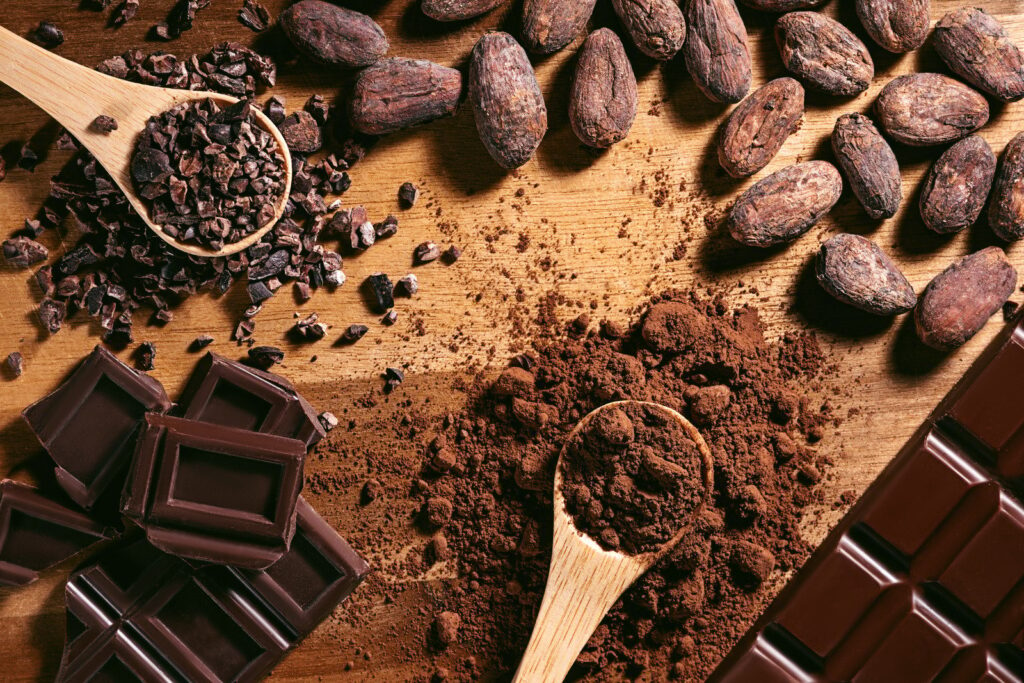Chocolate. The very word conjures up images of creamy truffles, decadent cakes, and melt-in-your-mouth candy bars. But the history of chocolate is far richer and more complex than its modern-day sweetness suggests. This article takes you on a fascinating journey through time, exploring the origins of chocolate in ancient Mesoamerica, its evolution through various cultures, and its transformation into the global phenomenon it is today.
From Bitter Brew to Prized Possession: Unveiling Chocolate’s Ancient Origins
The story of chocolate begins in the rainforests of Mesoamerica, with the humble cacao tree (Theobroma cacao).
- The Olmec Legacy: Evidence suggests the Olmec civilization, one of the earliest Mesoamerican cultures (1800 BCE – 400 BCE), may have been the first to consume cacao, potentially using it in ceremonial beverages.
- The Mayan Elixir: The Maya (2000 BCE – 900 CE) revered chocolate as a food of the gods. They ground roasted cacao beans into a bitter drink called “xocolatl,” often flavored with chili peppers and spices.
- Aztec Treasure: By the time of the Aztecs (1300 CE – 1521 CE), cacao beans had become a valuable commodity used as currency, a ceremonial offering, and a frothy beverage enjoyed by the elite.
Across the Seas: Chocolate’s European Encounter and Transformation
The arrival of European explorers in the 16th century marked a turning point in chocolate’s history.
- A New World Discovery: Spanish conquistador Hernán Cortés is credited with bringing chocolate back to Europe in the early 1500s. Initially, Europeans found the bitter drink unpleasant.
- Sweetening the Deal: Sugarcane plantations in the New World provided the key ingredient to transform chocolate. Europeans began adding sugar, cinnamon, and other spices, creating a sweeter and more palatable beverage.
- A Status Symbol: Chocolate remained a luxury item in Europe for centuries, enjoyed by the wealthy and associated with social status and sophistication.
From Exclusive Elixir to Global Craze: The Rise of Modern Chocolate
The 19th and 20th centuries witnessed a series of innovations that propelled chocolate into the mainstream.
- The Dutch Process: In the 17th century, the Dutch developed a method to remove bitterness from cocoa beans, creating a smoother and more versatile chocolate liquor.
- The Birth of the Bar: The invention of the cocoa press in the 1820s allowed for the separation of cocoa butter from cocoa solids. This paved the way for the creation of the first solid chocolate bars in the mid-1800s.
- Mass Production and Innovation: The late 19th and early 20th centuries saw the rise of mass-produced chocolate bars and the invention of iconic brands like Hershey’s and Cadbury.
Beyond Candy Bars: Exploring the Diverse World of Modern Chocolate
Today, chocolate transcends the realm of candy bars, offering a vast array of options for every palate.
- Bean-to-Bar Movement: This movement emphasizes ethically sourced, high-quality cacao beans and traditional production methods, resulting in complex and nuanced chocolate flavors.
- Craft Chocolate Boom: Small-batch chocolate makers are pushing boundaries with unique flavor combinations, inclusions, and processing techniques.
- Dark Chocolate’s Rise: Consumers are increasingly drawn to the health benefits and robust flavors of dark chocolate, with higher cocoa percentages.
A Bittersweet Legacy: The Environmental and Social Impact of Chocolate
Chocolate’s journey is not without its challenges.
- Deforestation and Sustainability Concerns: The cocoa industry faces issues like deforestation and child labor in certain regions. Sustainable sourcing practices are crucial.
- Fair Trade Initiatives: Fair trade certifications aim to ensure fair compensation for cocoa farmers and promote sustainable agricultural practices.
A Future Steeped in Chocolate: Innovation and Sustainability for Generations to Come
The story of chocolate is far from over. Here’s a glimpse into the future:
- Focus on Flavor: Consumers can expect continued innovation in flavor profiles and exploration of unique cacao bean origins.
- Sustainability at the Forefront: Sustainable sourcing and ethical labor practices will be paramount for the future of chocolate.
- Chocolate Reimagined: New technologies and processing techniques may lead to exciting new chocolate experiences.
A Legacy of Flavor and Culture: The Enduring Allure of Chocolate
Chocolate’s journey from a bitter Mesoamerican beverage to a global phenomenon is a testament to its versatility and cultural significance. As we savor the rich flavors of a modern chocolate bar, it’s a reminder of the ancient traditions, innovations, and ongoing pursuit of sustainability that brought






